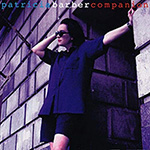Argon's hardware volume on the back sat at ~15:00 which gave me fine gradations in the lower ranges. I tried Bluetooth, analog via AudioQuest Mackenzie RCA from Argon's own €240 Solo streamer and phono off Pro-Ject's Carbon Evo with Ortofon 2M Red cart. I quickly determined that the DAC in the Solo was pleasantly round, mellow, nicely resolved and spatially generous whilst Bluetooth into the Fenris A4 was narrower and not as finely teased out yet more immediate.

 The gap wasn't massive but it's analog that you want if you wish to maximize costlier sources. My comments thus focus on the very commendable team work with Argon's streamer which adds WiFi, AirPlay and connection to a Roon network. Fenris A4 is for small to medium rooms. Go 25m² or higher without a sub and you'll notice. Now we're at the biggest difference versus the Forte A5. Perched atop stands and 60cm off my living room's front wall, those cut a very respectable figure even during higher SPL. Fenris A4 meanwhile wants to be more of a wall hugger. That had it pig-in-shite happy on an office sideboard with just 20cm of clearance; far happier than in the living room's free space of twice the size. That simply pulled out from under the bass foundation which the Forte A5 laid. Fenris A4 also entered deeper waters with higher SPL. That hit compression when the massive bass attacks of The Floozies' "Fnktrp" from Do Your Thing squeezed through the slot ports. But to be clear, in size-appropriate conditions Fenris' SPL stability is perfectly adequate even for movies or dancing fun shy of disco fever. For more there's always the pre-out looking for a sub.
The gap wasn't massive but it's analog that you want if you wish to maximize costlier sources. My comments thus focus on the very commendable team work with Argon's streamer which adds WiFi, AirPlay and connection to a Roon network. Fenris A4 is for small to medium rooms. Go 25m² or higher without a sub and you'll notice. Now we're at the biggest difference versus the Forte A5. Perched atop stands and 60cm off my living room's front wall, those cut a very respectable figure even during higher SPL. Fenris A4 meanwhile wants to be more of a wall hugger. That had it pig-in-shite happy on an office sideboard with just 20cm of clearance; far happier than in the living room's free space of twice the size. That simply pulled out from under the bass foundation which the Forte A5 laid. Fenris A4 also entered deeper waters with higher SPL. That hit compression when the massive bass attacks of The Floozies' "Fnktrp" from Do Your Thing squeezed through the slot ports. But to be clear, in size-appropriate conditions Fenris' SPL stability is perfectly adequate even for movies or dancing fun shy of disco fever. For more there's always the pre-out looking for a sub.
Fenris avoids undue emphasis on the 80Hz region to disguise lack of true low bass which in realistic setups like sideboard, book shelf or wall mount often leads to boom. Of course it doesn't entirely get away without love handles but its creators stopped the high-fat diet just right. Now the low freqs don't overlay the lower midrange which even during complex bass runs of dense arrangements remained astonishingly intelligible. On the sideboard Fenris also didn't get sniffy about my narrow 1.5m distance to its mate; nor my 2m sitting distance. Particularly in this configuration the small wolves surprised with their phase coherence and their deeply layered and well-sorted soundstage. For Dawda Jobarthe's wonderful "Dalua" [Transitional Times] the stage actors were tangibly 3D, cleanly separated yet embodied. The virtual stage scaled up with larger sitting distance and wider setup. Only well above 2 meters I lost a bit of center fill and just a touch of the nearfield's brilliant focus; but that was par for the low 3-figure course. In this discipline they nearly stole some butter off the Forte A5's bread and exceeded a few passive €500 boxes which still require external amplification.


 Likewise for impulsiveness. Fenris turned surprisingly quick corners for truly high-level precision in this class regardless of midband or treble transients. Psychoacoustics factored too. Tonally the Fenris A4 leans slightly into the fresh. So the snare drum from The Weeknd's "Blinding Lights" [After Hours] registered a small emphasis in the presence region and lower treble. That clocked extra transient vigor also on the acoustic guitar strings from "Dalua". Voices too felt somewhat slimmer than I know them not just from the Forte A5. That gave incisive cymbal workouts like the insistent hi-hat of Daft Punk's "Get Lucky" or Patricia Barber's strong sibilants from her Companion album more prominence. On the very top the Fenris 4 played it at least as resolved and airy as its costlier Forte A5 stablemate. This was particularly impressive on Max Roach's percussive exploits on his It's Time album's "Lonesome Lover". It's not often that a budget active and potentially wireless speaker captures percussion this uncompromised, clear, free and open in the treble.
Likewise for impulsiveness. Fenris turned surprisingly quick corners for truly high-level precision in this class regardless of midband or treble transients. Psychoacoustics factored too. Tonally the Fenris A4 leans slightly into the fresh. So the snare drum from The Weeknd's "Blinding Lights" [After Hours] registered a small emphasis in the presence region and lower treble. That clocked extra transient vigor also on the acoustic guitar strings from "Dalua". Voices too felt somewhat slimmer than I know them not just from the Forte A5. That gave incisive cymbal workouts like the insistent hi-hat of Daft Punk's "Get Lucky" or Patricia Barber's strong sibilants from her Companion album more prominence. On the very top the Fenris 4 played it at least as resolved and airy as its costlier Forte A5 stablemate. This was particularly impressive on Max Roach's percussive exploits on his It's Time album's "Lonesome Lover". It's not often that a budget active and potentially wireless speaker captures percussion this uncompromised, clear, free and open in the treble.